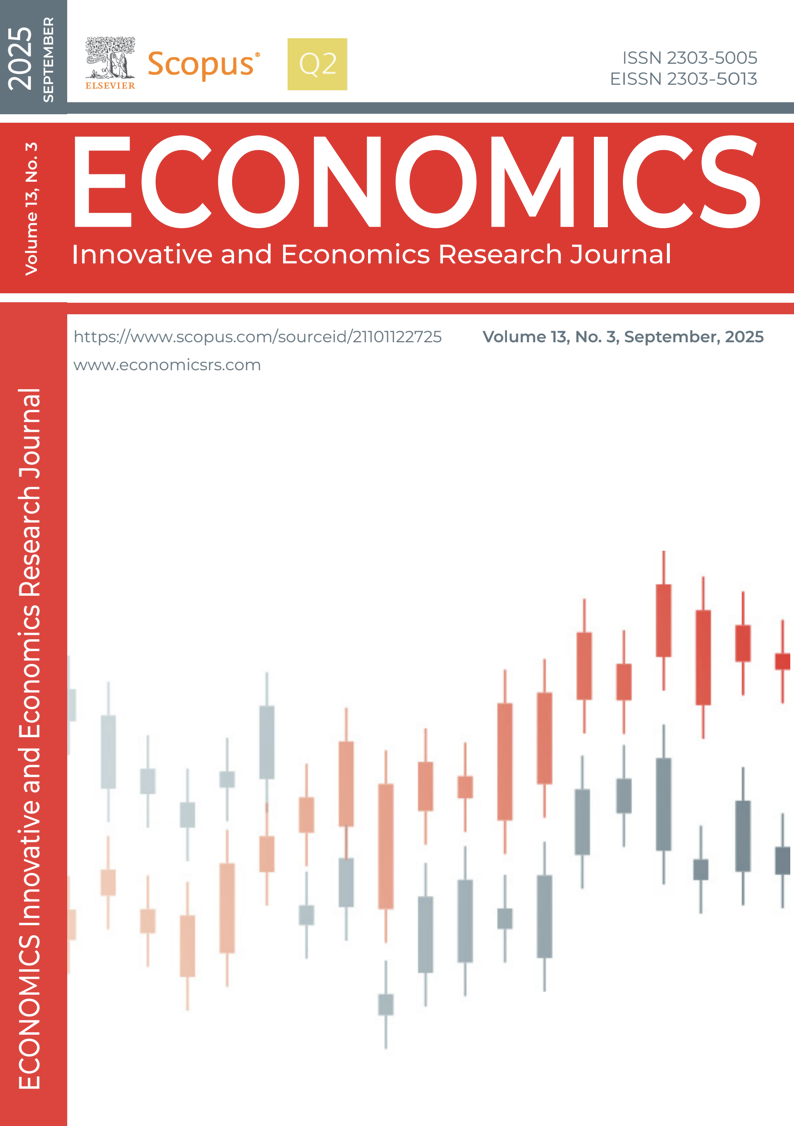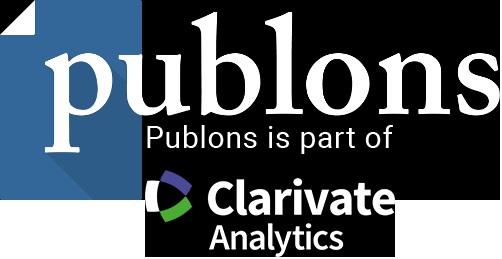CENTRAL BANK INDEPENDENCE: DOES LEGAL ORIGINS MATTER?
DOI:
https://doi.org/10.2478/eoik-2025-0075Keywords:
central bank independence, monetary policy, inflation, Legal Origin, Law and Finance, quality of institutionsAbstract
Legal Origins and Law and Finance literature, despite heavy criti-
cism, shows vivid examples of how legal traditions affect economic
and political institutions with strong consequences for financial sys-
tems. Is there a relation between Legal Origins and central bank inde-
pendence (CBI)? The research idea of the paper is based on prediction
that Legal Origins could related to formal status, but more likely affect
factual status. From the empirical side it is found that the level of
CBI varies in countries with different legal traditions. Such difference
was widened during the time of CBI reforms around the globe, so
Common Law countries demonstrate the lowest level of CBI among
others. ANOVA and Fisher LSD test confirm the statistical signifi-
cance of differences in CBI across Legal Origins. In terms of inflation
performance, the situation is not the same. Common Law countries
are neither the best nor worst inflation performers, saying that, low-
er formal CBI may coexist with a better inflation situation. Results
of Correspondence Analysis confirm that all together lower levels of
CBI and inflation compared to the group mean are in statistically sig-
nificant ties with the Common Law proxy during the 1980-2023 and
2000-2023 period, while rule of law and sovereign wealth funds prox-
ies are significant only during 2000-2023. From the theoretical side, it
means that Legal Origin matters for CBI, especially after comprehen-
sive reforms of monetary institutions, yet the channels of its influence
on central banks should be investigated further.
References
Acemoglu, D., Johnson, S., & Robinson, J. A. (2001). The colonial origins of comparative de-
velopment: An empirical investigation. American Economic Review, 91(5), 1369-1401.
www.doi.org/10.1257/aer.91.5.1369
Acemoglu, D., Johnson, S., & Robinson, J. A. (2002). Reversal of fortunes: Geography
and institutions in the making of the modern world income distribution. Quarter-
ly Journal of Economics, 117(4), 1133-1192. https://econpapers.repec.org/scripts/redir.
pf?u=http%3A%2F%2Fhdl.handle.net%2F10.1162%2F003355302320935025;h=repec:oup:q-
jecon:v:117:y:2002:i:4:p:1231-1294
Acemoglu, D., Johnson, S., Querubin, P., & Robinson, J. A. (2008). When does policy reform
work? The case of central bank independence. Brookings Papers on Economic Activity,
(1), 351-418. http://www.jstor.org/stable/27561621
Acemoglu, D., & Robinson, J. A. (2005). Unbundling institutions. Journal of Political Econo-
my, 113(5), 949-995. https://doi.org/10.1086/432166
Adrian, T., Khan, A., & Menand, L. (2024). A new measure of central bank independence. IMF
Working Paper, WP/24/35, 1-35. A New Measure of Central Bank Independence
Alesina, A., & Stella, A. (2010). The politics of monetary policy. In Handbook of Monetary
Economics, 3, 1001-1054. www.doi.org/10.3386/w15856
Amin, M., & Ranjan, P. (2008). When does legal origin matter? University of California-Irvine
Department of Economics Working Paper, 080912, 1-41. https://www.economics.uci.edu/
files/docs/workingpapers/2008-09/ranjan-12.pdf
Anafi, J. & Tasiu, S. (2024). Evaluating the Efficacy of Tuberculosis Management Strategies
in Nigeria: A Mathematical Modelling Approach. Healthcraft Frontiers, 2(1), 46-58.
https://doi.org/10.56578/hf020105
Armour, J., Deakin, S., Sarkar, P., Siems, M., & Singh, A. (2007). Shareholder protection and
stock market development: An empirical test of the legal origins hypothesis. MPRA Pa-
per No. 39055, 1-45. http://dx.doi.org/10.2139/ssrn.1094355
Arnone, M., Laurens, B. J., Segalotto, J.-F., & Sommer, M. (2009). Central bank autonomy:
Lessons from global trends. IMF Staff Papers, 56(2), 263-296. http://www.palgrave-jour-
nals.com/imfsp/journal/v56/n2/pdf/imfsp200825a.pdf
Arnone, M., & Romelli, D. (2013). Dynamic central bank independence indices and inflation
rate: A new empirical exploration. Journal of Financial Stability, 9(3), 385-398. https://
doi.org/10.1016/j.jfs.2013.03.002
Bagheri, F. M., & Habibi, N. (1998). Political institutions and central bank independence: A
cross-country analysis. Public Choice, 96(1), 187-204. https://econpapers.repec.org/
scripts/redir.pf?u=http%3A%2F%2Fjournals.kluweronline.com%2Fissn%2F0048-5829%2F-
contents;h=repec:kap:pubcho:v:96:y:1998:i:1-2:p:187-204
Beck, T., & Levine, R. (2005). Legal institutions and financial development. In C. Ménard &
M. M. Shirley (Eds.), Handbook of New Institutional Economics (pp. 251-278). Nether-
lands: Springer. www.doi.org/10.3386/w10126
Beck, T., Demirgüç-Kunt, A., & Levine, R. (2002). Law, endowments, and finance. NBER
Working Paper No. 9089, 1-55. www.doi.org/10.1016/S0304-405X(03)00144-2
Beck, T., Demirgüç-Kunt, A., & Levine, R. (2003). Law and finance: Why does legal origin
matter? Journal of Comparative Economics, 31(4), 653-675. https://doi.org/10.1016/j.
jce.2003.08.001
Central Bank IndependenceDoes Legal Origins Matter?
Berggren, N., Daunfeldt, S.-O., & Hellstrom, J. (2014). Social trust and central bank independence. Euro-
pean Journal of Political Economy, 34, 425-439. https://doi.org/10.1016/j.ejpoleco.2013.10.002
Berggren, N., Daunfeldt, S.-O., & Hellstrom, J. (2015). Does social trust speed up reforms: Case
of central bank independence. IFN Working Paper No. 1053, 1-24. www.doi.org/10.1017/
S1744137415000284
Blinder, A. (1998). Central banking in theory and practice. MIT Press. https://www.artsrn.ualberta.ca/
econweb/landon/1999%20Blinder%20Central%20Banking.pdf
Blinder, A. (1999). Central bank credibility: Why do we care? How do we build it? American Economic
Review, 90(5), 1421-1431. www.doi.org/10.1257/aer.90.5.1421
Bodea, C., & Garriga, A. (2022). Central bank independence in Latin America: Politicization and de-del-
egation. Journal of Politics, 77(1), 268-284. https://doi.org/10.1111/gove.12706
Bodea C., Garriga, A. C., & Masaaki, H. (2020) Central Bank Independence and the Fate of Authori-
tarian Regimes. In: Populism, Economic Policies and Central Banking. SUERF - The European
Money and Finance Forum. Bocconi University and BAFFI CAREFIN, Vienna, 161-179.
https://www.researchgate.net/publication/343181525_Central_Bank_Independence_and_the_
Fate_of_Authoritarian_Regimes
Bodea, C., & Hicks, R. (2015). Price stability and central bank independence: Discipline, credibility, and dem-
ocratic institutions. International Organization, 69(1), 35-61. https://www.jstor.org/stable/43283290
Bordo, M., & Rockoff, H. (1996). The gold standard as a “good housekeeping seal of approval.” Journal
of Economic History, 56(2), 389-428. https://doi.org/10.1017/S0022050700016491
Bournakis, I., Rizov, M., & Christopoulos, D. (2023). Revisiting the effect of institutions on the econom-
ic performance of SSA countries: Do legal origins matter in the context of ethnic heterogeneity?
Economic Modelling, 125, 106332. https://doi.org/10.1016/j.econmod.2023.106332
Boyd, J., Levine, R., & Smith, B. (2001). The impact of inflation on financial sector performance. Jour-
nal of Monetary Economics, 47(2), 221-248. https://doi.org/10.1016/S0304-3932(01)00049-6
Bradford, A., Chang, Y., Chilton, A. S., & Garoupa, N. (2021). Do legal origins predict legal substance?
Journal of Law & Economics, 64(1), 207-232. www.doi.org/10.2139/ssrn.3521492
Carstens, A., & Jacome, L. (2005). Latin American central banks reforms: Progress and challenges. IMF
Working Paper No. WP/05/114, 1-43. https://www.imf.org/external/pubs/ft/wp/2005/wp05114.pdf
Choi, S., Boyd, J., & Smith, B. (1996). Inflation, financial markets, and capital formation. Federal Re-
serve Bank of St Louis Review, 78(3), 9-35. https://core.ac.uk/download/pdf/6755324.pdf
Crowe, C., & Meade, E. E. (2008). Central bank independence and transparency: Evolution and ef-
fectiveness. European Journal of Political Economy, 24(4), 763-777. https://doi.org/10.1016/j.
ejpoleco.2008.06.004
Cukierman, A. (1992). Central bank strategy, credibility, and independence: Theory and evidence. MIT
Press. https://doi.org/10.2307/2939099
Cukierman, A. (2008). Central bank independence and monetary policymaking institutions – Past,
present, and future. European Journal of Political Economy, 24(4), 722-736. https://doi.
org/10.1016/j.ejpoleco.2008.07.007
Cukierman, A. (2013). Monetary policy and institutions before, during, and after the global financial
crisis. Journal of Financial Stability, 9(3), 373-384. https://doi.org/10.1016/j.jfs.2013.02.002
Cukierman, A., & Webb, S. B. (1995). Political influence on the central bank: International evidence.
The World Bank Economic Review, 9(3), 397-423. https://www.jstor.org/stable/3989848
Cukierman, A. (1994). Commitment through delegation, political influence, and central bank independence.
In J. O. De Beaufort Wijnholds, S. C. W. Eijffinger, & L. H. Hoogduin (Eds.), A framework for mon-
etary stability, 55-74. Kluwer Academic Publishing. https://doi.org/10.1007/978-94-011-0850-8_7
Cukierman, A., Miller, G. P., & Neyapti, B. (2002). Central bank reform, liberalization, and inflation
in transition economies: An international perspective. Journal of Monetary Economics, 49(2),
-264. https://doi.org/10.1016/S0304-3932(01)00107-6
Koziuk V. / Economics - Innovative and Economics Research Journal, doi: 10.2478/eoik-2025-0075
Cukierman, A., & Lippi, F. (1999). Central bank independence, centralization of wage bargaining, in-
flation, and unemployment: Theory and some evidence. European Economic Review, 43(7),
-1434. https://doi.org/10.1016/S0014-2921(98)00128-7
Cukierman, A., Webb, S. B., & Neyapti, B. (1992). Measuring the independence of central banks and its
effect on policy outcomes. The World Bank Economic Review, 6(3), 353-398. https://www.jstor.
org/stable/3989977
D’Amato, M., & Pistoresi, B. (2009). On the determinants of central bank independence in open economies.
International Journal of Finance & Economics, 14(2), 107-119. https://doi.org/10.1002/ijfe.360
De Haan, J., & Eijffinger, S. (2016). The politics of central bank independence. De Nederlandsche Bank
Working Paper No. 539, 1-23. https://dx.doi.org/10.2139/ssrn.2887931
De Haan, J., & Van’t Hag, G. J. (1995). Variation in central bank independence across countries: Some pro-
visional empirical evidence. Public Choice, 85(3), 335-351. https://www.jstor.org/stable/30027056
De Jong, E. (2002). Why are price stability and statutory independence of central banks negatively cor-
related? The role of culture. European Journal of Political Economy, 18(4), 675-694. https://doi.
org/10.1016/S0176-2680(02)00114-3
Dincer, N. N., & Eichengreen, B. (2014). Central bank transparency and independence: Updates
and new measures. International Journal of Central Banking, 10(1), 189-259. https://dx.doi.
org/10.2139/ssrn.2579544
Djankov, S., McLiesh, C., & Shleifer, A. (2007). Private credit in 129 countries. Journal of Financial
Economics, 84(2), 299-329. www.doi.org/10.1016/j.jfineco.2006.03.004
Eichengreen, B., & Sussman, N. (2000). The international monetary system in the (very) long run. IMF
Working Paper No. WP/00/43, 1-55. https://link.springer.com/rwe/10.1007/978-3-031-35583-7_117
Eijffinger, S. C. W., & Stadhouders, P. (2003). Monetary policy and rule of law. CEPR Discussion Paper
No. 3698. https://ssrn.com/abstract=374520
Eijffinger, S. C. W., & De Haan, J. (1996). The political economy of central bank independence. Prince-
ton Special Papers in International Economics, 19. https://ies.princeton.edu/pdf/SP19.pdf
Emenalo, C., & Gagliardi, F. (2020). Is current institutional quality linked to legal origins and dis-
ease endowments? Evidence from Africa. Research in International Business and Finance, 52,
https://doi.org/10.1016/j.ribaf.2019.101065
Fuhrer, J. C. (1997). Central bank independence and inflation targeting: Monetary policy paradigms for
the next millennium? New England Economic Review, Jan/Feb, 19-36. https://www.proquest.
com/openview/7959eec77b738c8049d4c4b62db1e06c/1?pq-origsite=gscholar&cbl=25146
Garriga, A. C., & Rodriguez, C. M. (2023). Central bank independence and inflation volatility in developing
countries. Economic Analysis and Policy, 78, 1320-1341. https://doi.org/10.1016/j.eap.2023.05.008
Garriga, A. C., & Rodriguez, C. M. (2020). More effective than we thought: Central Bank indepen-
dence and inflation in developing countries. Economic Modelling, 85, 87-105. https://doi.
org/10.1016/j.econmod.2019.05.009
Gavin, M., & Manger, M. (2023). Populism and de facto central bank independence. Comparative Po-
litical Studies, 56(8), 1189-1223. https://doi.org/10.1177/00104140221139513
Glaeser, E., & Shleifer, A. (2002). Legal origins. Quarterly Journal of Economics, 117(4), 1193-1230.
https://doi.org/10.1162/003355302320935016
Glaeser, E., & Shleifer, A. (2003). The rise of the regulatory state. Journal of Economic Literature,
(2), 401-425. www.doi.org/10.1257/002205103765762725
Gollwitzer, S., & Quintyn, M. (2010). The effectiveness of macroeconomic commitment in weak(er) in-
stitutional environments. IMF Working Paper No. WP/10/193, 1-58. https://dx.doi.org/10.2139/
ssrn.1663855
Goodhart, C. A. E., & Meade, E. E. (2003). Central banks and supreme courts. Paper presented at the
Conference in Honour of Charles Freedman, Bank of Canada, 2002. https://www.fmg.ac.uk/
sites/default/files/2020-09/sp153.pdf
Central Bank IndependenceDoes Legal Origins Matter?
Grilli, V., Masciandaro, D., & Tabellini, G. (1991). Institutions and policies. Economic Policy, 6(13),
-392. https://doi.org/10.2307/1344630
Ha, J., Kose, M. A., & Ohnsorge, F. (2019). Inflation in emerging and developing economies: Evolution,
drivers, and policies. Washington, DC: World Bank. http://documents.worldbank.org/curated/
en/74918154230509875
Hart, O. (1995). Firms, contracts, and financial structure. Oxford University Press. https://doi.
org/10.1093/0198288816.001.0001
Hayek, F. (1960). The constitution of liberty. University of Chicago Press. https://archive.org/details/
TheConstitutionOfLiberty/mode/2up
Hayo, B., & Hefeker, C. (2002). Reconsidering central bank independence. European Journal of Politi-
cal Economy, 18(4), 653-674. https://doi.org/10.1016/S0176-2680(02)00113-1
Hayo, B., & Voigt, S. (2008). Inflation, central bank independence, and the legal system. Journal of
Institutional and Theoretical Economics, 164(4), 751-777. https://www.jstor.org/stable/40752727
Hayo, B. (1998). Inflation culture, central bank independence, and price stability. European Journal of
Political Economy, 14(2), 241-263. https://doi.org/10.1016/S0176-2680(98)00006-8
Hielscher, K., & Markwardt, G. (2012). The role of political institutions for the effectiveness of cen-
tral bank independence. European Journal of Political Economy, 28(3), 286-301. https://doi.
org/10.1016/j.ejpoleco.2011.08.004
Ioannidou, V., Kokas, S., Lambert, T., & Michaelides, A. (2022). (In) dependent central banks. https://
ssrn.com/abstract=4262695
Jacome, L. (2001). Legal central bank independence and inflation in Latin America during the 1990s.
IMF Working Paper No. WP/01/212, 1-40. https://ssrn.com/abstract=880883
Jacome, L., & Vazquez, F. (2008). Is there any link between legal central bank independence and infla-
tion? Evidence from Latin America and the Caribbean. European Journal of Political Economy,
(4), 788-801. https://doi.org/10.1016/j.ejpoleco.2008.07.003
Jacome, L., Jacome, M. L. I., & Pienknagura, S. (2022). Central bank independence and inflation in Latin
America: Through the lens of history. IMF Working Paper. https://ssrn.com/abstract=4234375
Jensen, M., & Meckling, W. (1976). Theory of the firm: Managerial behavior, agency costs, and ownership struc-
ture. Journal of Financial Economics, 3(4), 305-360. https://doi.org/10.1016/0304-405X(76)90026-X
Keefer, P., & Stasavage, D. (2003). The limits of delegation: Veto players, central bank independence,
and the credibility of monetary policy. American Political Science Review, 97(3), 593-621.
https://www.jstor.org/stable/3117617
Khan, M., Senhadji, A., & Smith, B. (2001). Inflation and financial depth. IMF Working Paper No.
WP/01/44, 1-32. https://ssrn.com/abstract=879432
Koziuk, V. (2016). Independence of central banks in commodity economies. Gerald of National Bank of
Ukraine, 235, 6-25. http://dx.doi.org/10.26531/vnbu2016.235.006
La Porta, R., Lopez-de-Silanes, F., Pop-Eleches, C., & Shleifer, A. (2004). Judicial checks and balances.
Journal of Political Economy, 112(2), 445-470. https://doi.org/10.1086/381480
La Porta, R., Lopez-de-Silanes, F., Shleifer, A., & Vishny, R. W. (2000a). Investor protection and corporate gover-
nance. Journal of Financial Economics, 58(1), 3-27. https://doi.org/10.1016/S0304-405X(00)00065-9
La Porta, R., Lopez-de-Silanes, F., Shleifer, A., & Vishny, R. W. (2000b). Agency problems and dividend pol-
icies around the world. Journal of Finance, 55(1), 1-33. http://dx.doi.org/10.1111/0022-1082.00199
La Porta, R., Lopez-de-Silanes, F., & Shleifer, A. (2006). What works in securities laws? Journal of Finance,
(1), 1-32. https://scholar.harvard.edu/sites/scholar.harvard.edu/files/shleifer/files/securities_jof.pdf
La Porta, R., Lopez-de-Silanes, F., & Shleifer, A. (2008). The economic consequences of legal origins.
Journal of Economic Literature, 46(2), 285-332. https://www.jstor.org/stable/27646991
La Porta, R., Lopez-de-Silanes, F., & Shleifer, A. (2013). Law and finance after a decade of research. In
G. Constantinides, M. Harris, & R. M. Stulz (Eds.), Handbook of the Economics of Finance (Vol.
A, pp. 425-491). Amsterdam: Elsevier. http://dx.doi.org/10.1016/B978-0-44-453594-8.00006-9
Koziuk V. / Economics - Innovative and Economics Research Journal, doi: 10.2478/eoik-2025-0075
La Porta, R., Lopez-de-Silanes, F., Shleifer, A., & Vishny, R. W. (1997). Legal determinants of external
finance. Journal of Finance, 52(3), 1131-1150. https://doi.org/10.2307/2329518
La Porta, R., Lopez-de-Silanes, F., Shleifer, A., & Vishny, R. W. (1998). Law and finance. Journal of Po-
litical Economy, 106(6), 1113-1155. https://scholar.harvard.edu/sites/scholar.harvard.edu/files/
shleifer/files/law_finance.pdf
La Porta, R., Lopez-de-Silanes, F., Shleifer, A., & Vishny, R. W. (1999). The quality of government.
Journal of Law, Economics and Organization, 15(1), 222-279. https://scholar.harvard.edu/files/
shleifer/files/qualilty_govt_jleo.pdf
Lange, M. (2004). British colonial legacies and political development. World Development, 32(6), 905-
https://doi.org/10.1016/j.worlddev.2003.12.001
Lohmann, S. (1992). Optimal commitment in monetary policy: Credibility versus flexibility. American
Economic Review, 32(1), 273-286. https://www.jstor.org/stable/2117615
Lybeck, T. (1998). Elements of central bank autonomy and accountability. IMF Occasional Paper No.
OP/98/1, 1-46. https://www.imf.org/external/np/leg/sem/2004/cdmfl/eng/lybek.pdf
Lybeck, T. (1999). Central bank autonomy, and inflation and output performance in the Baltic States,
Russia, and other countries of the former Soviet Union. IMF Working Paper No. WP/99/04,
-38. https://ssrn.com/abstract=880531
Ma, D. L., Xiao, Y. P., & Guo, Z. M. (2022). Environmental Regulation, Technological Progress and
Carbon Emission Efficiency: An Empirical Analysis Based on Panel Data of Chinese Provinces.
Opportunities and Challenges in Sustainability, 1(1), 38-51. https://doi.org/10.56578/ocs010105
Malmendier, U. (2009). Law and finance “at the origin“. Journal of Economic Literature, 47(4), 1076-
http://www.jstor.org/stable/40651533
Masciandaro, D. (2019). Populism, economic policies, political pressure, and central bank (in)depen-
dence. Bocconi Working Paper No. 111, 1-24. https://dx.doi.org/10.2139/ssrn.3369544
Masciandaro, D. (2020). What bird is that? Central banking and monetary policy in the last forty years.
Bocconi Working Paper No. 127, 1-56. https://doi.org/10.2139/ssrn.3518369
Masciandaro, D., & Romelli, D. (2018). Beyond the central bank independence veil: New evidence. Bocconi
Working Paper Series No. 71, 1-41. https://papers.ssrn.com/sol3/papers.cfm?abstract_id=3126179
Masciandaro, D., & Passarelli, F. (2013). Banking bailouts and distributive monetary policy: Voting on central
bank independence. Baffi Center Research Paper No. 146. https://dx.doi.org/10.2139/ssrn.2370253
Masciandaro, D., Magurno, J., & Tarsia, R. (2020). Central bank independence: Metrics and empirics.
BAFFI CAREFIN Centre Research Paper No. 2021-151. https://dx.doi.org/10.2139/ssrn.3759586
Masciandaro, D., & Romelli, D. (2015). Ups and downs: Central Bank independence from the Great
Inflation to the Great Recession: Theory, institutions, and empirics. Financial History Review,
(3), 259-289. https://dx.doi.org/10.2139/ssrn.2591904
Merryman, J. H. (1985). The civil law tradition: An introduction to the legal systems of Western Europe
and Latin America. Stanford University Press. https://openlibrary.org/books/OL2869854M/
The_civil_law_tradition
Modigliani, F., & Miller, M. (1958). The cost of capital, corporation finance, and the theory of invest-
ment. American Economic Review, 48(3), 261-297. https://www.jstor.org/stable/1809766
Moser, P. (1999). Checks and balances and the supply of central bank independence. European Econom-
ic Review, 43(8), 1569-1593. https://doi.org/10.1016/S0014-2921(98)00045-2
Mutarindwa, S., Schäfer, D., & Stephan, A. (2021). Differences in African Banking Systems: Causes
and Consequences. Journal of Institutional Economics, 17(4), 561-581. https://doi.org/10.1017/
S174413742100014X
Nattinger, M., & Hall, J. (2012). Legal origins and state economic freedom. Journal of Economics and
Economic Education Research, 13(1), 25-43. https://www.abacademies.org/articles/legal-ori-
gins-and-state-economic-freedom.pdf
Central Bank IndependenceDoes Legal Origins Matter?
Nurbayev, D. (2017). The rule of law, central bank independence, and price stability. Journal of Institu-
tional Economics, 14(4), 659-687. https://doi.org/10.1017/S1744137417000261
Oto-Peralies, D., & Romero-Avila, D. (2017). Legal reforms and economic performance: Revisiting the
evidence. World Bank Development Report Background Paper: Governance and the Law, 1-109.
https://thedocs.worldbank.org/en/doc/193351485539892515-0050022017/original/WDR17B-
PRevisitingLegalOrigins.pdf
Pistor, K. (2006). Legal ground rules in coordinated and liberal market economies. In K. J. Hopt, E.
Wymeersch, H. Kanda, & H. Baum (Eds.), Corporate governance in context: Corporations,
states, and markets in Europe, Japan, and the US, 1-45. Oxford University Press. https://dx.doi.
org/10.2139/ssrn.695763
Posen, A. (1995). Declarations are not enough: Financial sector sources of central bank independence.
NBER Macroeconomic Annual 1995. https://doi.org/10.2307/3585117
Posen, A. S. (1993). Why central bank independence does not cause low inflation. In R. O’Brian (Ed.),
Finance and the international economy, 7, 40-65. Oxford University Press. https://www.econ-
biz.de/Record/why-central-bank-independence-does-not-cause-low-inflation-there-is-no-insti-
tutional-fix-for-politics-posen-adam-simon/10001313991
Posner, R. A. (1973). Economic analysis of the law. Little, Brown. https://doi.org/10.2307/3003108
Rajan, R. G., & Zingales, L. (2003). The great reversals: The politics of financial development in the twentieth
century. Journal of Financial Economics, 69(1), 5-50. https://doi.org/10.1016/S0304-405X(03)00125-9
Roe, M. J. (2006). Legal origins, politics, and modern stock markets. Harvard Law Review, 120(2), 460-
https://www.jstor.org/stable/40042609
Roe, M. J. (2007). Juries and the political economy of legal origin. Journal of Comparative Economics,
(3), 294-308. https://ssrn.com/abstract=1304174
Roe, M. J., & Siegel, J. I. (2009). Finance and politics: A review essay based on Kenneth Dam’s analysis
of legal traditions in the law-growth nexus. Journal of Economic Literature, 47(3), 781-800.
https://www.jstor.org/stable/27739986
Romelli, D. (2022). The political economy of reforms in central bank design: Evidence from a new data-
set. Economic Policy, 37(111), 361-400. https://dx.doi.org/10.2139/ssrn.3235209
Romelli, D. (2024). Trends in central bank independence: A de-jure perspective. Bocconi University
Working Paper No. 217. https://dx.doi.org/10.2139/ssrn.4716704
Schmidt-Hebbel, K., & Carrasco, M. (2016). The past and future of inflation targeting. Bank do Brazil Pa-
per,1-45. https://link.springer.com/chapter/10.1007/978-81-322-2840-0_18
Shevchenko, I. (2023). A Methodical Approach to Determining the Level of Development of Digi-
tal Trade in Global Markets. Collection of papers new economy, 1, 196-216. https://doi.
org/10.61432/CPNE0101196s
Topić – Pavković, B. (2024). Challenges to Global Monetary and Financial Stability. Collection of pa-
pers new economy, 2. 31-45. https://doi.org/10.61432/CPNE0201031t
Unsal, D. F., Papageorgiou, C., & Garbers, H. (2022). Monetary policy frameworks: An index and
new evidence. IMF Working Paper No. WP/22/022. https://www.imf.org/en/Publications/WP/
Issues/2022/01/28/Monetary-Policy-Frameworks-An-Index-and-New-Evidence-512228
Voigt, S. (2000). Institutionen kanalisieren Verhalten – zu verhaltensbeschraenkenden Wirkungen von
unabha¨ngiger Justiz und Zentralbank. Mimeo, University of Bochum, Department of Economics.
Xue, L. Y., Hou, Y., Wang, S. W., Luo, C., Xia, Z. Y., Qin, G., Liu, S., Wang, Z. L., Gao, W. S., & Yang,
K. (2022). A Dual-Selective Channel Attention Network for Osteoporosis Prediction in Com-
puted Tomography Images of Lumbar Spine. Acadlore Transactions on AI and Machine Learn-
ing, 1(1), 30-39. https://doi.org/10.56578/ataiml010105
Downloads
Published
How to Cite
Issue
Section
License
Copyright (c) 2025 ECONOMICS - INNOVATIVE AND ECONOMICS RESEARCH JOURNAL

This work is licensed under a Creative Commons Attribution-NonCommercial-NoDerivatives 4.0 International License.























